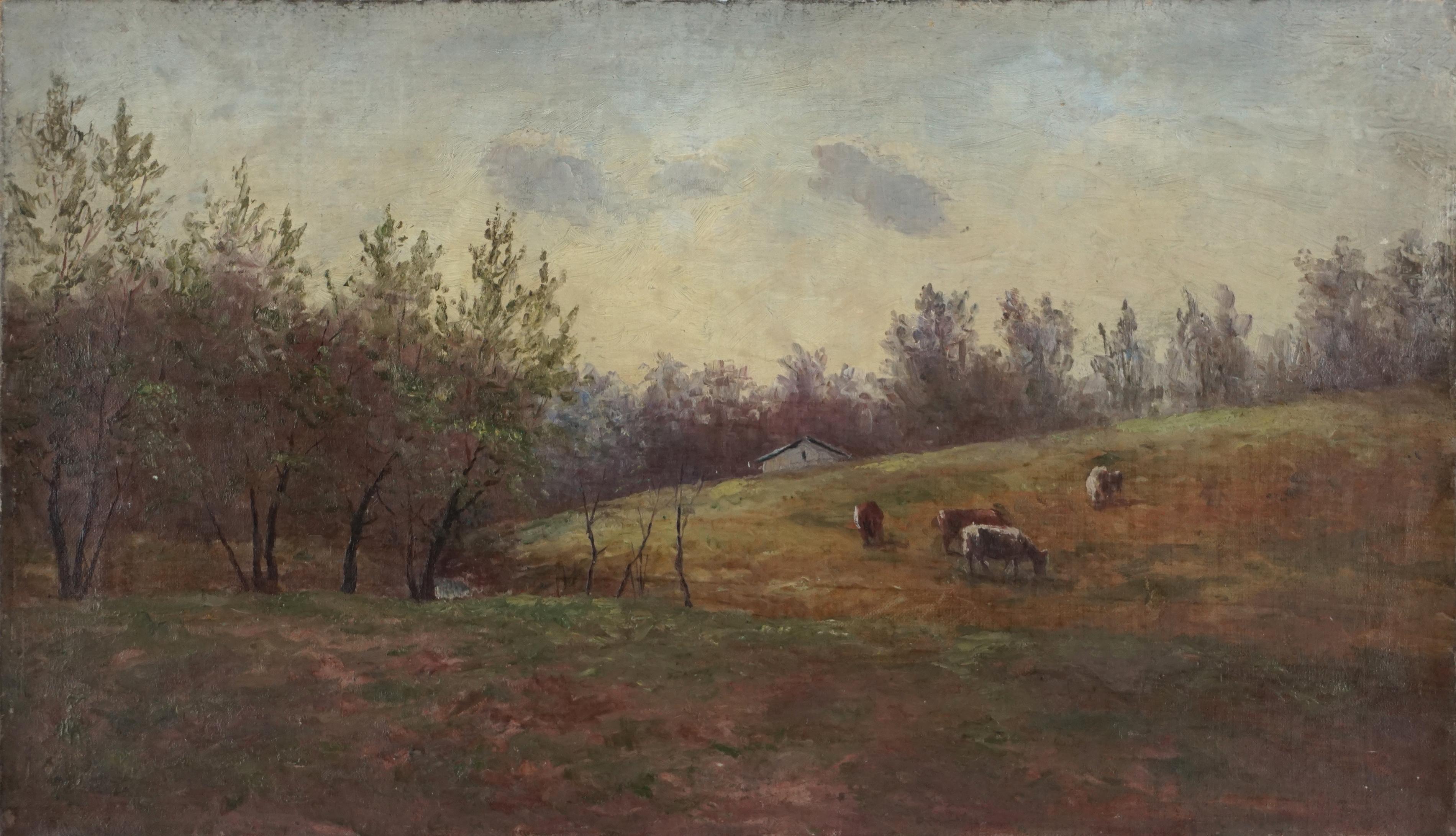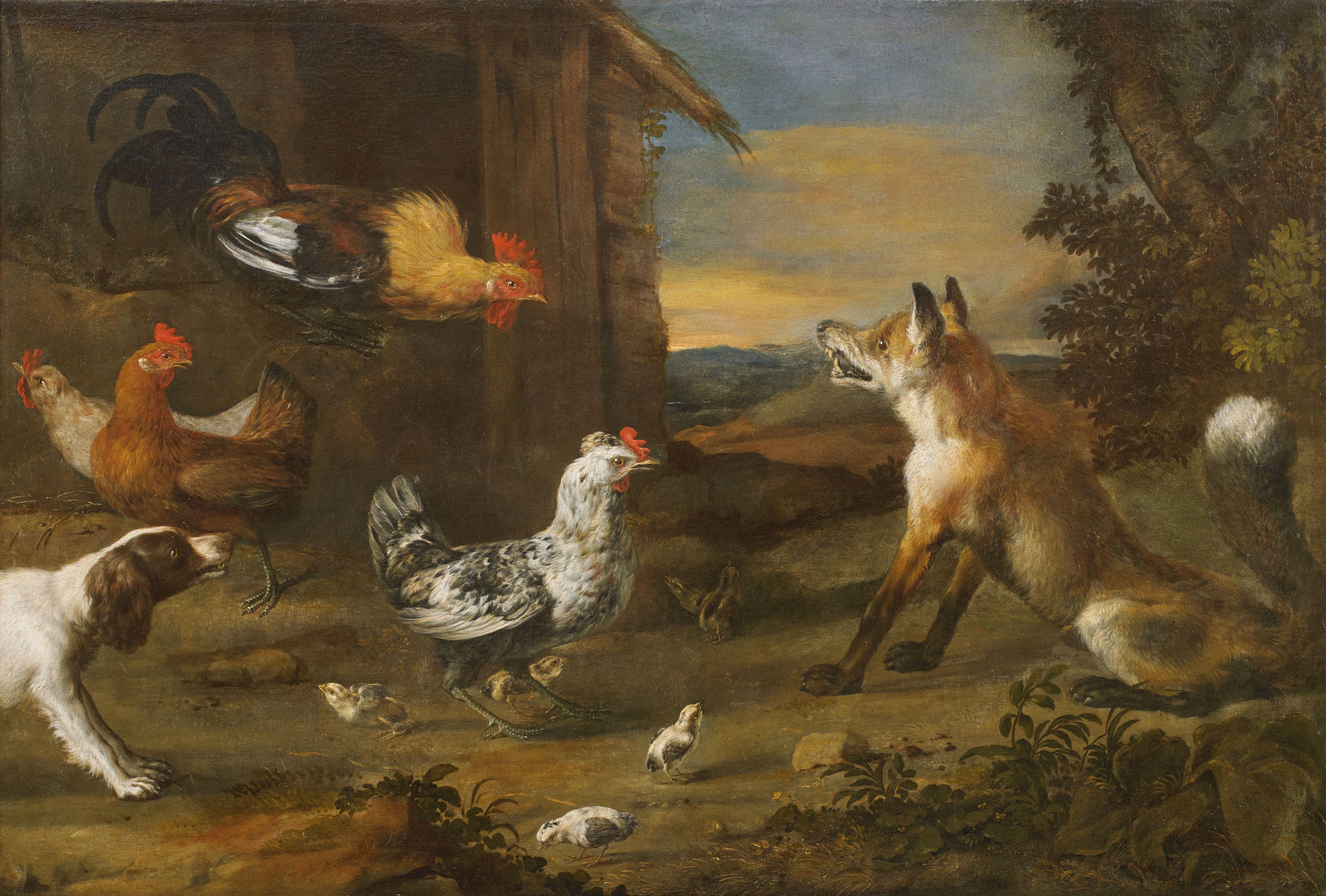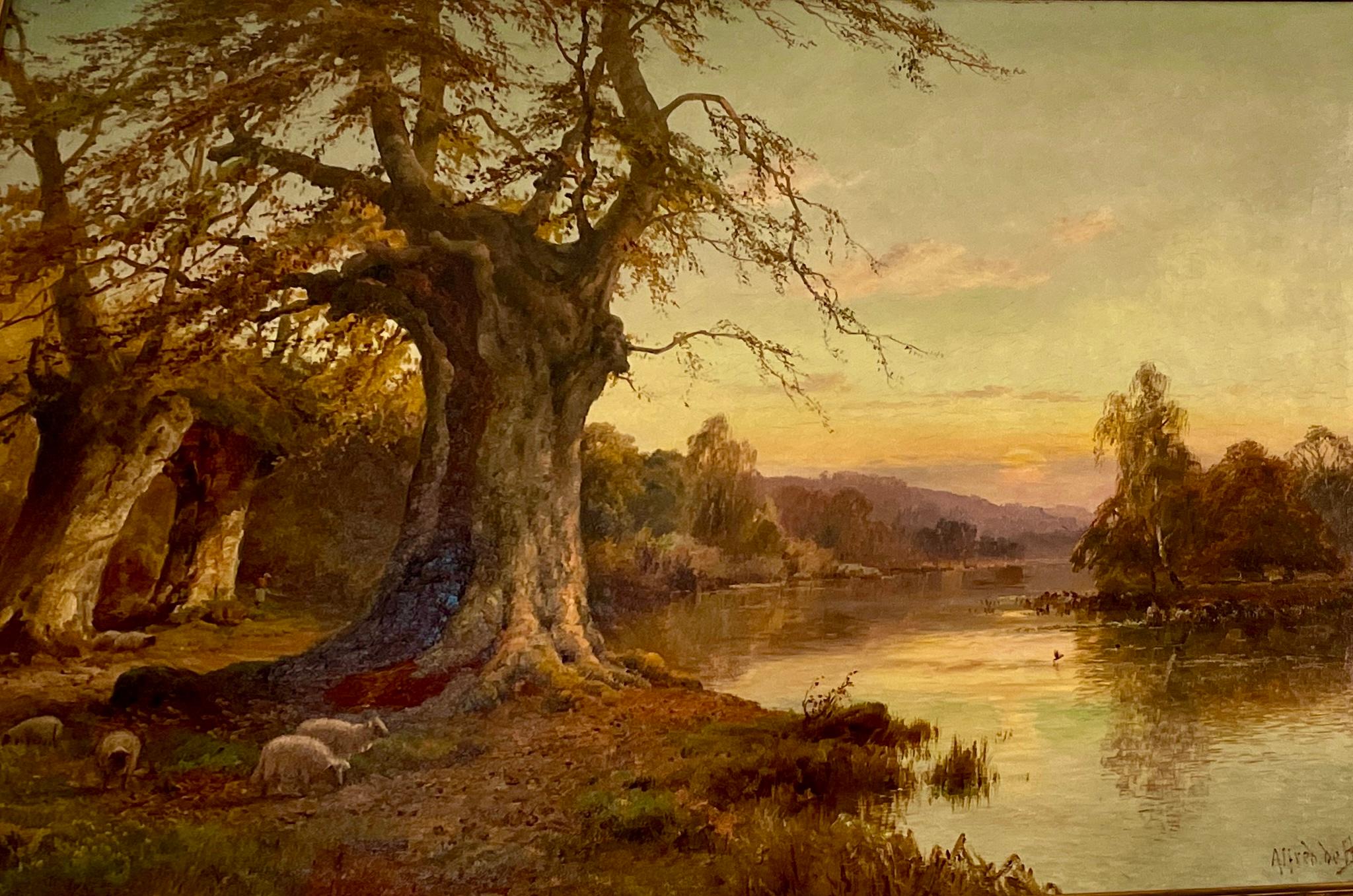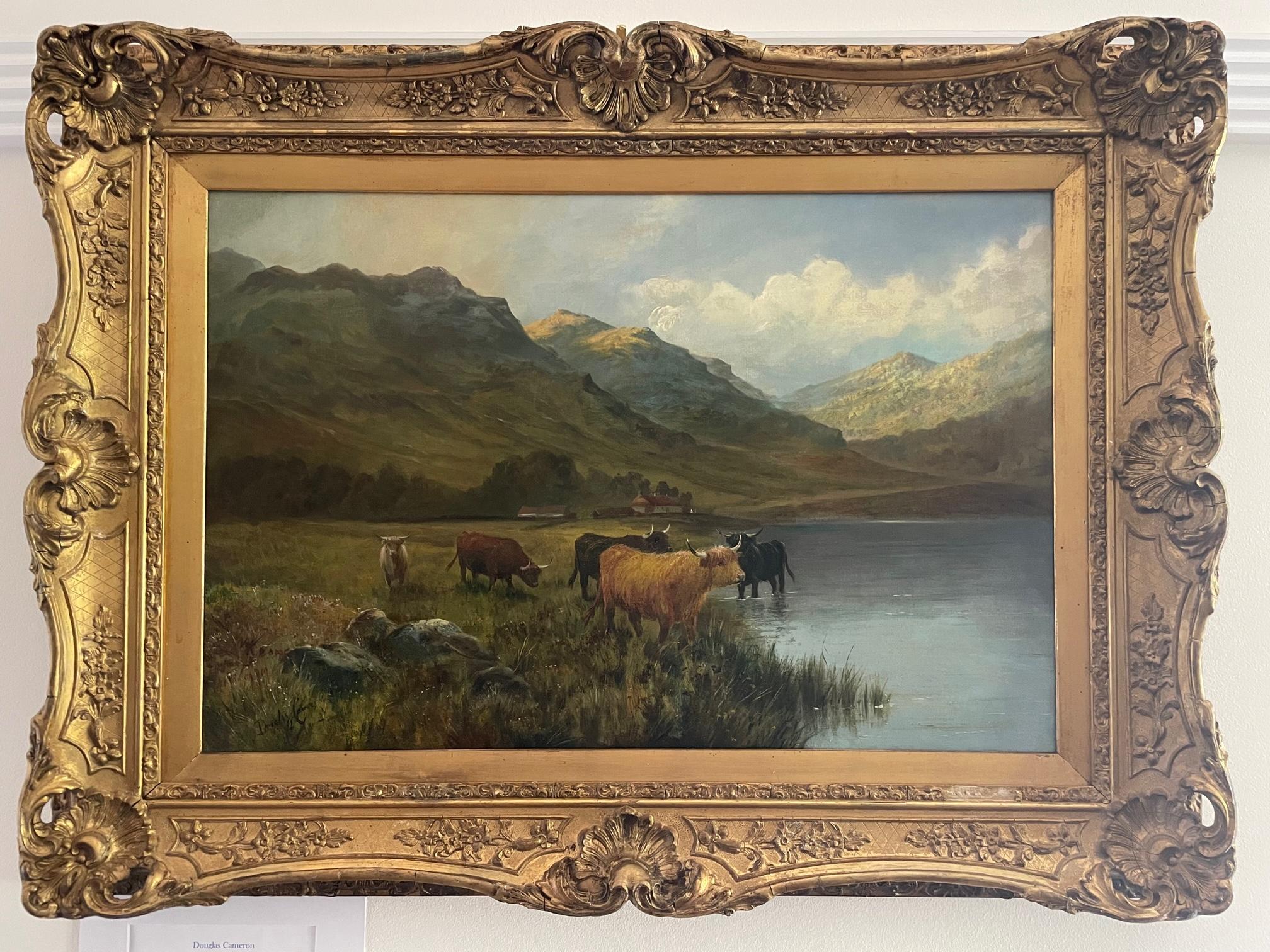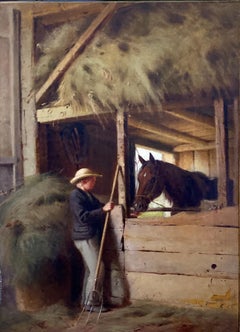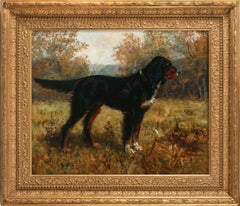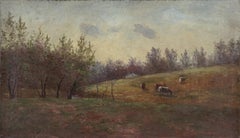
Guarding the Sheep
Want more images or videos?
Request additional images or videos from the seller
1 of 7
Thomas Bigelow Craig Guarding the Sheep
About the Item
- Creator:Thomas Bigelow Craig (1849 - 1924, American)
- Dimensions:Height: 12.5 in (31.75 cm)Width: 17 in (43.18 cm)Depth: 3 in (7.62 cm)
- Medium:
- Movement & Style:
- Period:
- Condition:
- Gallery Location:Saratoga Springs, NY
- Reference Number:1stDibs: LU170211886032
About the Seller
4.2
Vetted Seller
These experienced sellers undergo a comprehensive evaluation by our team of in-house experts.
Established in 1992
1stDibs seller since 2015
30 sales on 1stDibs
Typical response time: 19 hours
More From This SellerView All
- Saratoga Horse RaceBy Erik JohnsenLocated in Saratoga Springs, NYSigned lower right. His father nearly sold 5-year- old Erik Johnsen in 1965 for $600. What followed was a chaotic journey into beatings, sexual abuse and groundlessness. Moving cons...Category
2010s Post-Impressionist Animal Paintings
MaterialsOil, Wood
- A Summer GatheringBy Ambrose AndrewsLocated in Saratoga Springs, NYSigned lower right. An itinerant portrait, miniature, and landscape painter, Ambrose Andrews had a wide-ranging career geographically that saw him in many regions including New York (1829-31), Connecticut (1837), Texas (1837-1841) and Louisiana (1841-42). After 1844, he was active in St. Louis, New York City, Buffalo, New York, Vermont and Canada. He was born in West Stockbridge, Massachusetts, and in 1824, attended the National Academy of Design. Andrews exhibited paintings at the Republic of Texas Capitol...Category
19th Century Hudson River School Landscape Paintings
MaterialsCanvas, Oil
- Autumn Scene with BoatBy Arthur PartonLocated in Saratoga Springs, NYSigned lower left. Bio:: Known as a Hudson River School painter, especially of mountain landscapes, Arthur Parton was well established in the New York art world where he exhibited ...Category
Late 19th Century Hudson River School Landscape Paintings
MaterialsOil, Canvas
- The Cove at DuskLocated in Saratoga Springs, NYSigned and dated 1877. Although born in Jamestown, New York, Mortimer Smith would become well-known as a Detroit architect and artist by the end of the nineteenth century. Little is known of Smith's earlier years; however, scholars speculate that he studied in Oberlin and Sandusky, Ohio before moving to Detroit in 1855. There, the artist flourished and became famous for his crisp landscapes of local scenery, including his beloved winter scenes. In addition to his artistic career, Smith founded a successful architectural firm by the name of Smith, Hynchman and Grylls; Smith's reputation in the visual arts was often overshadowed by his draftsmanship as an architect. Nevertheless, he was a vital force in Detroit's arts community exhibiting his works in venues including the Detroit Art...Category
1870s Hudson River School Landscape Paintings
MaterialsCanvas, Oil
- River LandscapeBy John DolphLocated in Saratoga Springs, NYJohn Henry Dolph, is best known as painter of domestic animals, especially cats. He was born in 1835 in Fort Ann, New York, and spent much of his career th...Category
19th Century Hudson River School Landscape Paintings
MaterialsCanvas, Oil
$15,000 - Indians in a LandscapeBy William Mason BrownLocated in Saratoga Springs, NYSigned lower left. Along with Martin Johnson Heade, William Mason Brown was among a very elite group of artists equally adept at landscape painting as well as still-life painting. H...Category
Late 19th Century Hudson River School Landscape Paintings
MaterialsCanvas, Oil
You May Also Like
- "Interior of a Stable" William Hart, Hudson River School Antique, Boy and HorseBy William HartLocated in New York, NYWilliam M. Hart (1823 - 1894) Interior of a Stable Oil on canvas 17 x 12 inches Provenance William Macbeth Gallery, New York Mrs. Mabel Brady Garvan Collection Christie's New York, Sporting Art, November 28, 1995, Lot 116 Ann Carter Stonesifer, Maryland Estate of above Brunk Auctions, Asheville, North Carolina, January 27 2018, Lot 777 Exhibited New York, The Metropolitan Museum of Art, Life in America, April 24 - October 29, 1939, no. 123, illustrated. New York, Macbeth Gallery, 1892: Sixtieth Anniversary Exhibition, April 1952, p. 5, no. 18. Literature Turner Reuter Jr, Animal and Sporting Artists in America, Middleburg, Virginia, 2008, p. 306. Gary Stiles, William Hart: Catalogue Raisonné and Artistic Biography, no. 1126, illustrated. It should be noted that the Francis Patrick Garvan and Mrs. Mabel Brady Garvan collection, of which this painting was a part of, was one of the foremost American Art collections and now makes up a large part of the Smithsonian American Art Museum and the Yale University Art Gallery collections. Born in 1823 in Paisley, Scotland, William Hart emigrated with his parents to the United States at the age of nine and settled in Albany, New York. It was here that Hart first began his artistic training when he was placed under the tutelage of Messrs, Eaton & Gilbert, the prestigious coach-makers from Troy, New York. During this time, Hart learned how to decorate coach panels, covering them with either landscapes or figurative compositions. At the age of seventeen, he was eagerly contemplating an artist’s profession. Consequently, he left the mechanical trade of coach-making and began expanding his artistic pursuits to more refined endeavors. Hart followed coach-making with decorating window shades and later developed an interest in portraiture. Around 1840, he established his first formal studio in his father’s woodshed in Troy. There, he created many likenesses of individuals, affording him a nominal income. Once, he remarked that he felt prouder over his first fee of five dollars for painting a head then for the larger sums he would command later in his career. Nevertheless, his wages from portraits during this early period proved insufficient. Thus, he expanded into landscape painting, allowing him to barter his works or sell them for modest prices. In 1842, Hart moved to Michigan in an attempt to further his success; portraiture remained his primary means of support. Unfortunately, his experiences in the West were disappointing. Hart spent three years living a rough existence until he finally returned to Albany in 1845. Upon his return, he fully devoted himself to the art of landscape painting. Despite his failing health, he worked diligently to perfect his skill until 1849 when he traveled abroad to his native land of Scotland. This trip was made possible through the generosity of his patron and advisor, Dr. Ormsby of Albany. For three years, he studied in the open-air, creating brilliant sketches of the Scottish Highlands and the surrounding British Isles. Returning to Albany once more in 1852, Hart enjoyed improved health and was reinvigorated with purpose. The following year, he moved to New York and opened a studio, promoting himself as a specialist in landscape painting. Hart became a regular contributor to the National Academy of Design. His works received a great deal of attention from artists and connoisseurs alike, all of whom praised him for his fresh, self-taught style. In 1855, he was designated as an associate of the National Academy of Design; three years later he was elected to Academician. In 1865, he was unanimously chosen to be the first president of the Brooklyn Academy of Design. It was during his tenure there that he delivered his famous lecture The Field and Easel, which emphasized the distinguishing principles of landscape art in America. Hart argued that landscape painters should express the “look of the place” being depicted.Critics during the 1870s noted his sensitive balance between capturing a strict “real” interpretation of nature and that of a more “ideal” sentimental tone. For instance, in 1869, Putnam Magazine noted that Hart brought back “exquisite studies” of the surrounding Tappan...Category
19th Century Hudson River School Animal Paintings
MaterialsCanvas, Oil
- Gordon Setter in a Landscape by Otto Norquist (American: 1859-1906)Located in New York, NYOtto Norquist (1859-1906) "Gordon Setter in a Landscape, 1890" Oil on canvas 22 x 27 inches Signed and dated 1890, lower right Otto Norquist was born in...Category
Late 19th Century Hudson River School Landscape Paintings
MaterialsOil, Canvas
- 19th Century Hudson River School Bucolic LandscapeBy John Frederick KensettLocated in Soquel, CABeautiful example of the Hudson River School romantic bucolic New York autumn landscape with cows foraging. Illegible artist signature on stretcher bar (See enhanced images). Conditi...Category
1870s Hudson River School Landscape Paintings
MaterialsOil, Linen
$2,400 Sale Price20% Off - Deer in the ForestLocated in New York, NYSigned and dated lower right: • FARNY • /88Category
Mid-19th Century Hudson River School Landscape Paintings
MaterialsGouache, Watercolor
- 17Th Century Animals Scene Angelo Maria Crivelli Fight Fox Oil on Canvas OrangeBy Angelo Maria CrivelliLocated in Sanremo, ITThis fox in the chicken coop, oil on canvas, 105 x 156 without frame and 135 x 185 cm with frame, was clearly painted by Angelo Maria Crivelli (Milan 1660 - 1730) called Crivellone; painter from the Milanese stable but also very active in Piedmont thanks to the Savoy family. The theme in question was very successful in his time and he also developed it vertically, as we can see in some of his works at Castello Sforzesco; here the defense of the hen house...Category
Late 17th Century Italian School Animal Paintings
MaterialsOil, Canvas
- Van der Bent, Southern Landscape with woman animals, Dutch Old Master, BerchemLocated in Greven, DE17th Century Old Master, Figurative and Landscape Painting by Jan Van der Bent So far, little is known about the life and work of Jan van der Bent. He was...Category
17th Century Baroque Landscape Paintings
MaterialsCanvas, Oil
$16,256 Sale Price20% Off
Recently Viewed
View AllMore Ways To Browse
Sheep Art
Antique Sheep
Sheep Painting
Sheep Oil
Hudson River School Oil
Sheep Paintings
Oil Painting Sheep
Sheep Animal
Antique Sheep Painting
Antique Sheep Paintings
Antique Oil Painting Sheep
Antique Sheep Oil Painting
Antique Oil Painting Sheep Paintings
Animal Oil Paintings Sheep
Craig Thomas
Craig Thomas Paintings
Portrait With Horse
Animales Books


